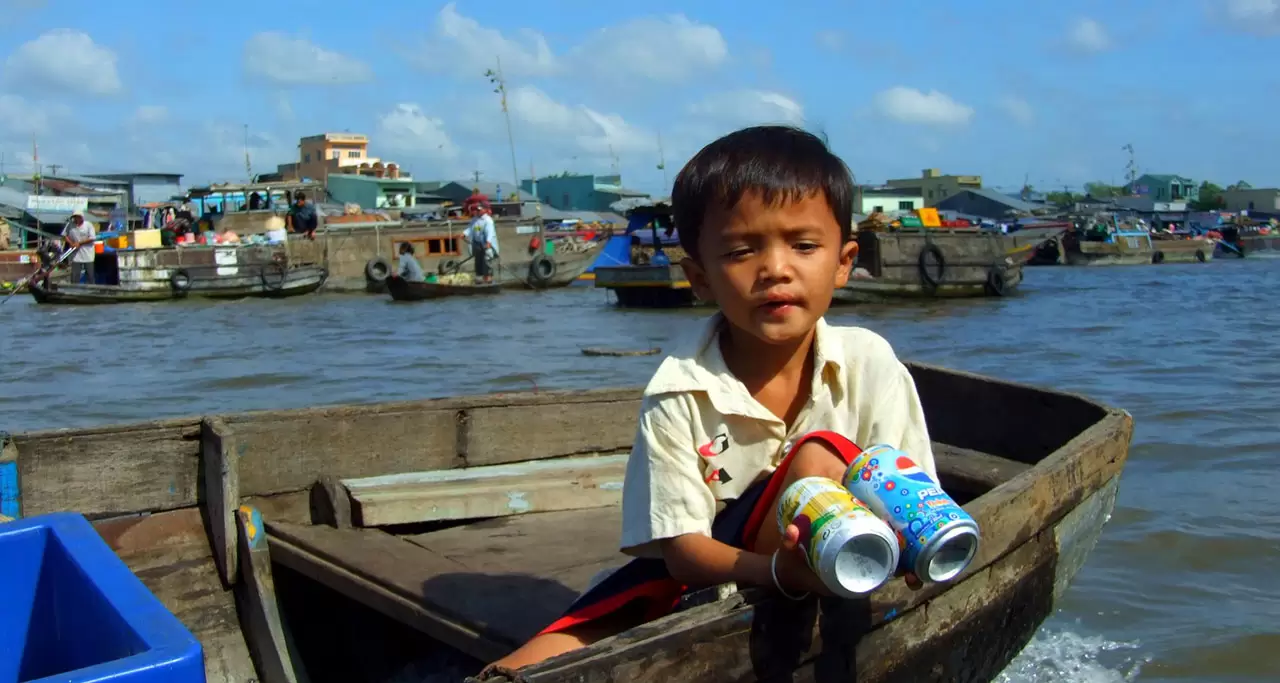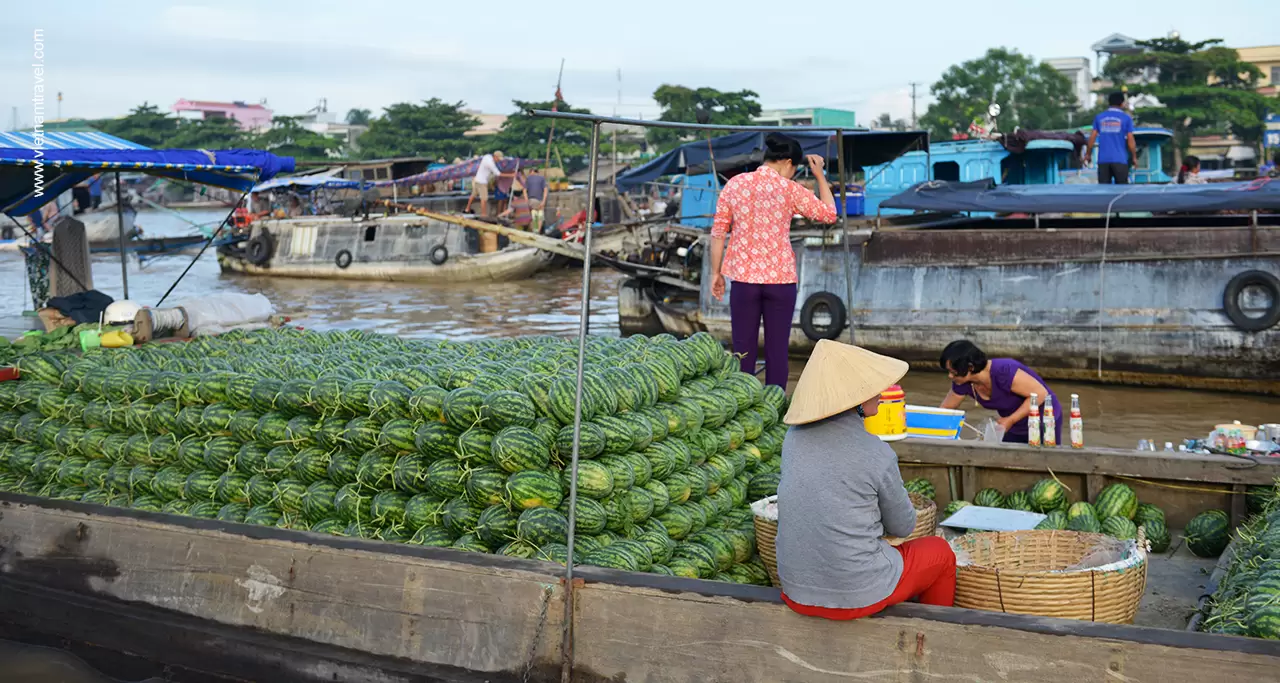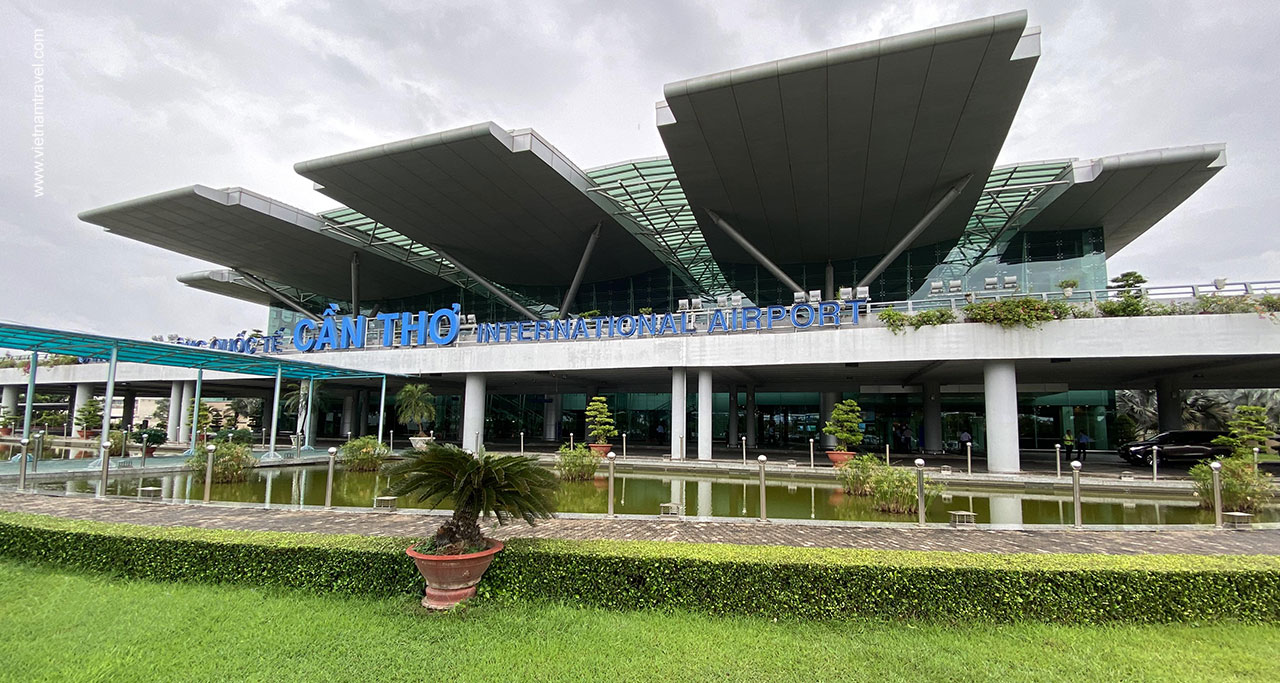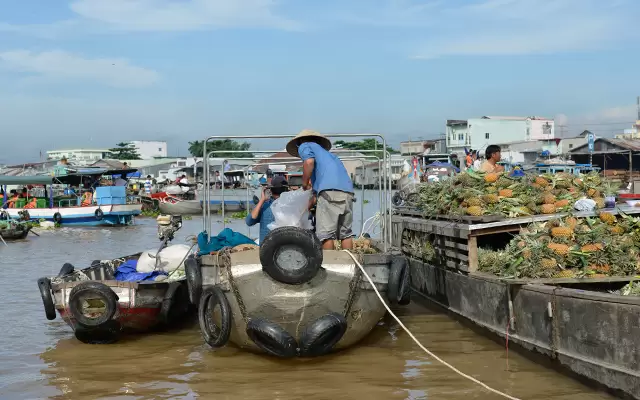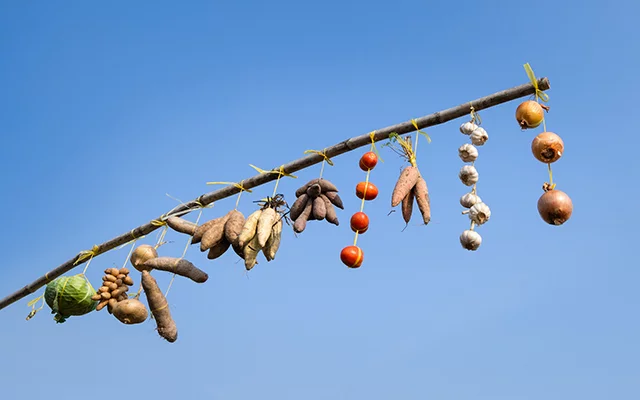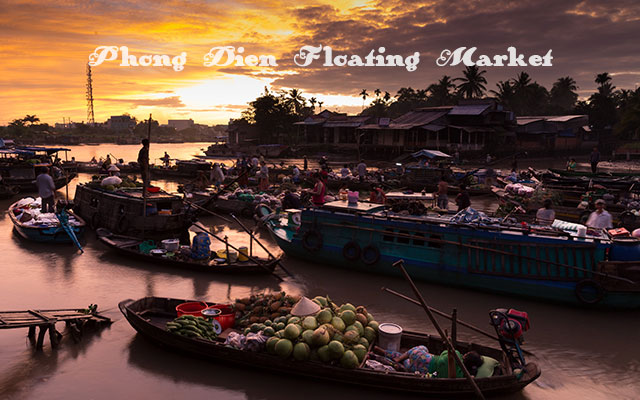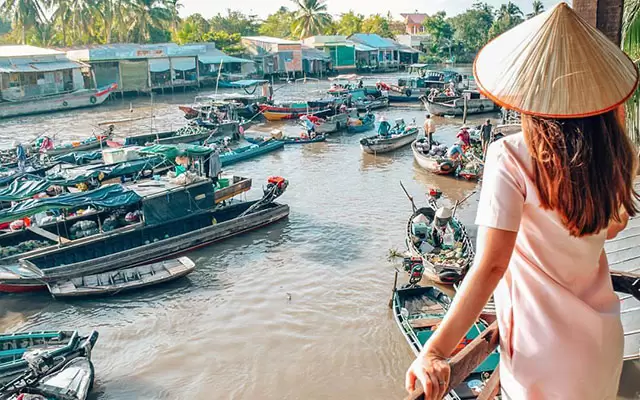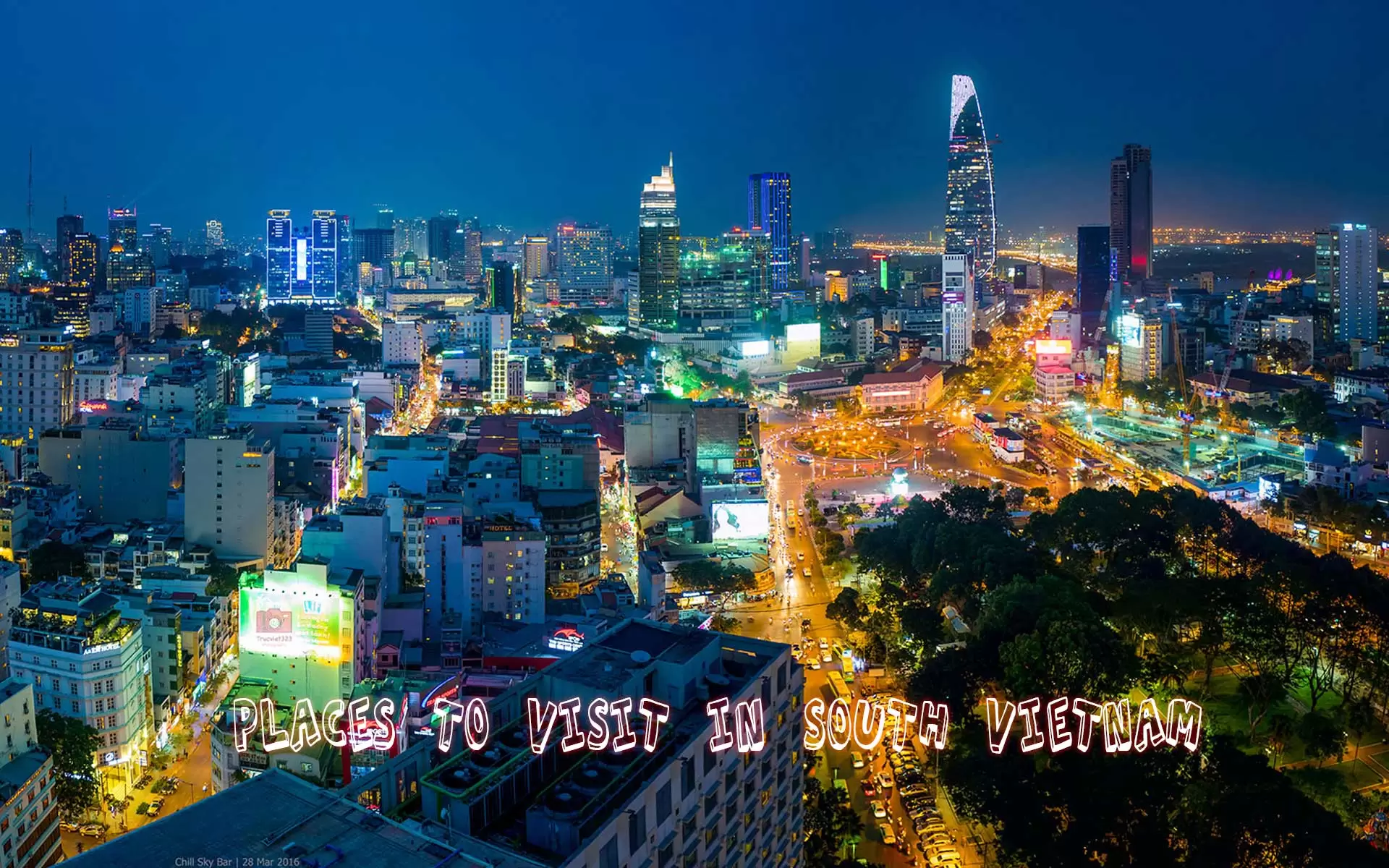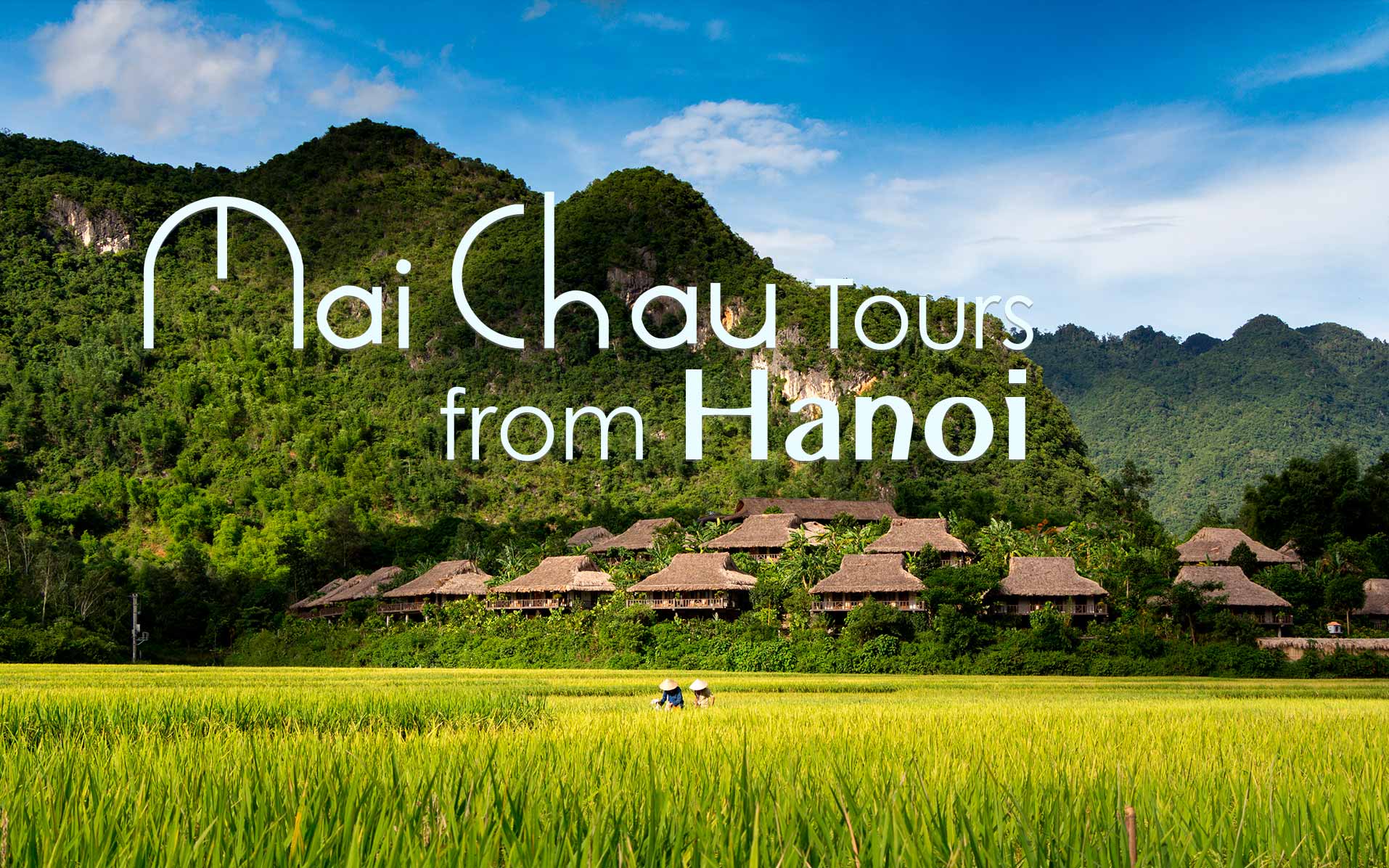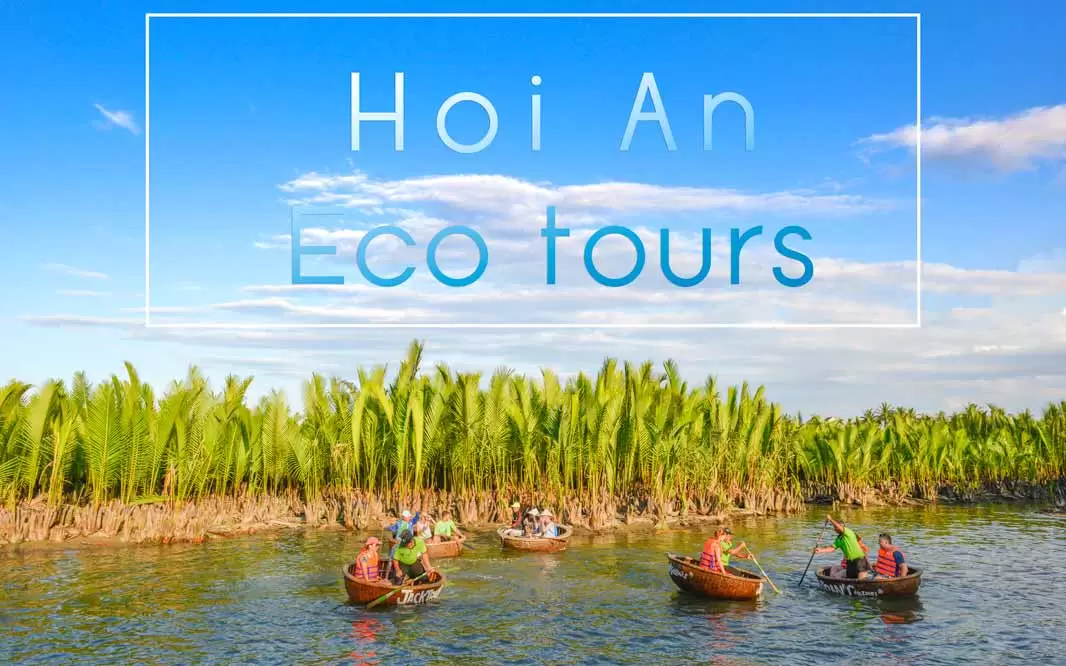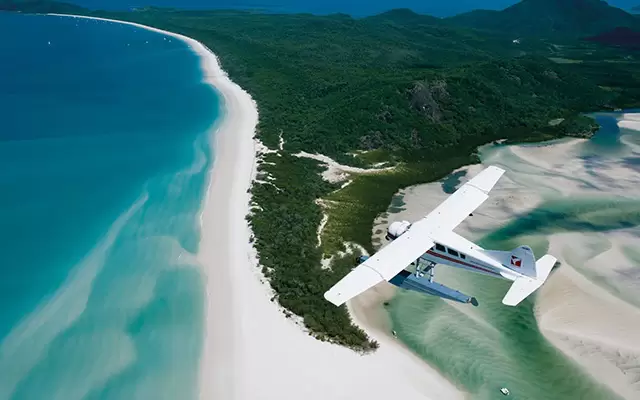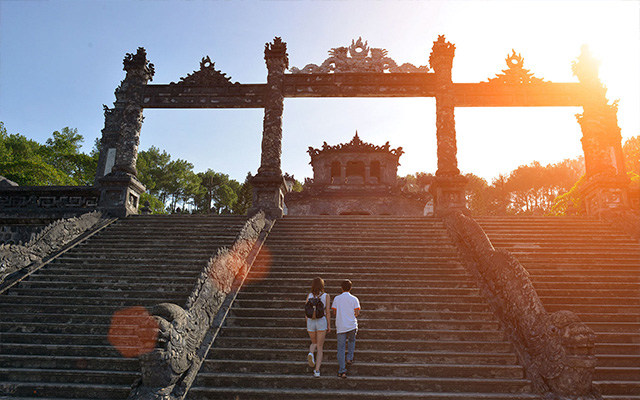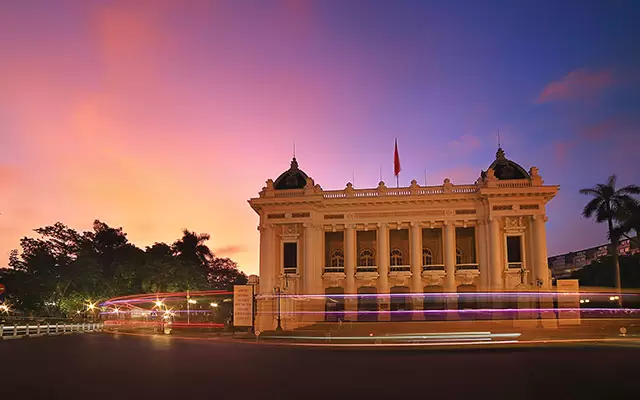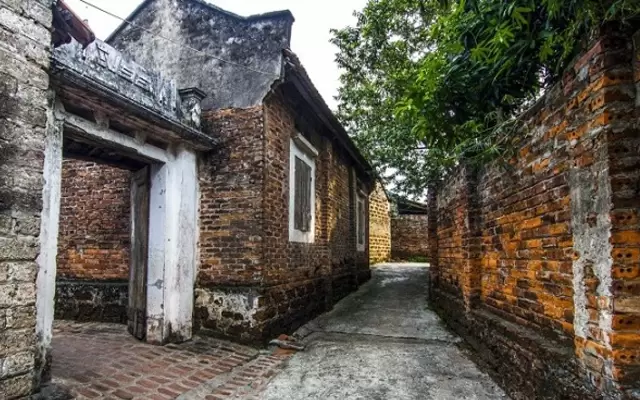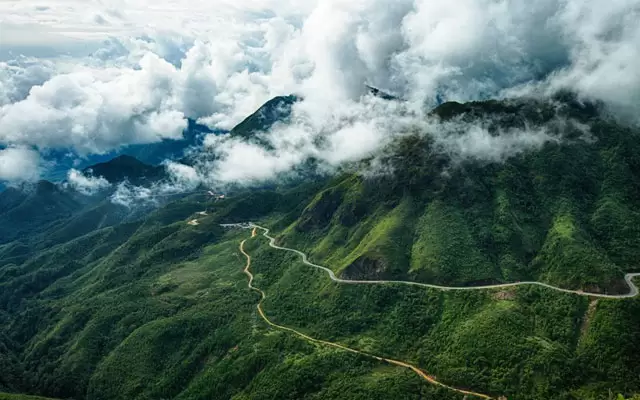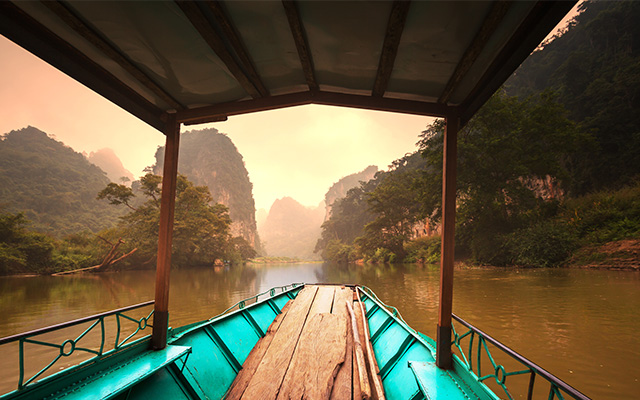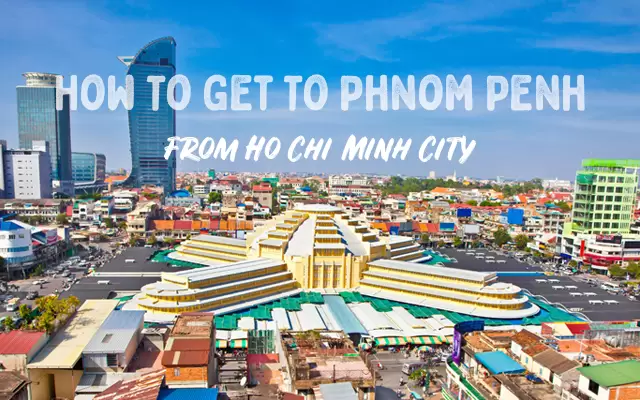Cai Rang Floating Market
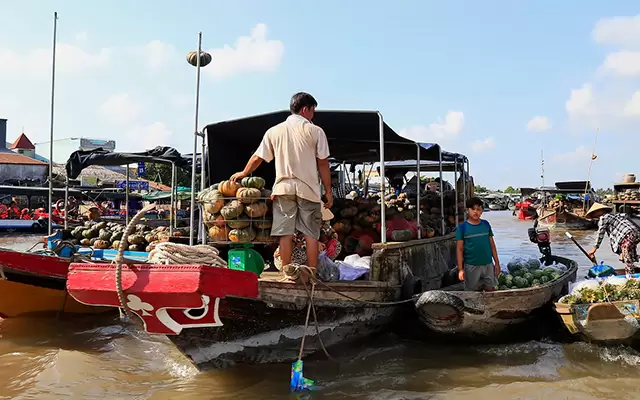
Cai Rang Floating Market is the most famous and biggest floating market in the Mekong Delta. The market is unique culture of local people living along this mighty river. Instead of shopping in the town, they shop and barter on the river that is more convenient to access by waterways.
The floating market is located on Can Tho River (part of Hau River), Cai Rang District – about 6 km away from the center of Can Tho City in the direction of Soc Trang, or around 45 minutes away from Ninh Kieu Quay by boat. In 2016, Cai Rang Floating Market was recognized as a national intangible cultural heritage. The market was also elected as one of the most impressive markets in the world by UK’s Rough Guide. Once you visit Mekong, floating market is a kind of things should not miss in your travel plan. To experience Cai Rang at its best, get up early and take a boat trip, it is really worth for your day visit.
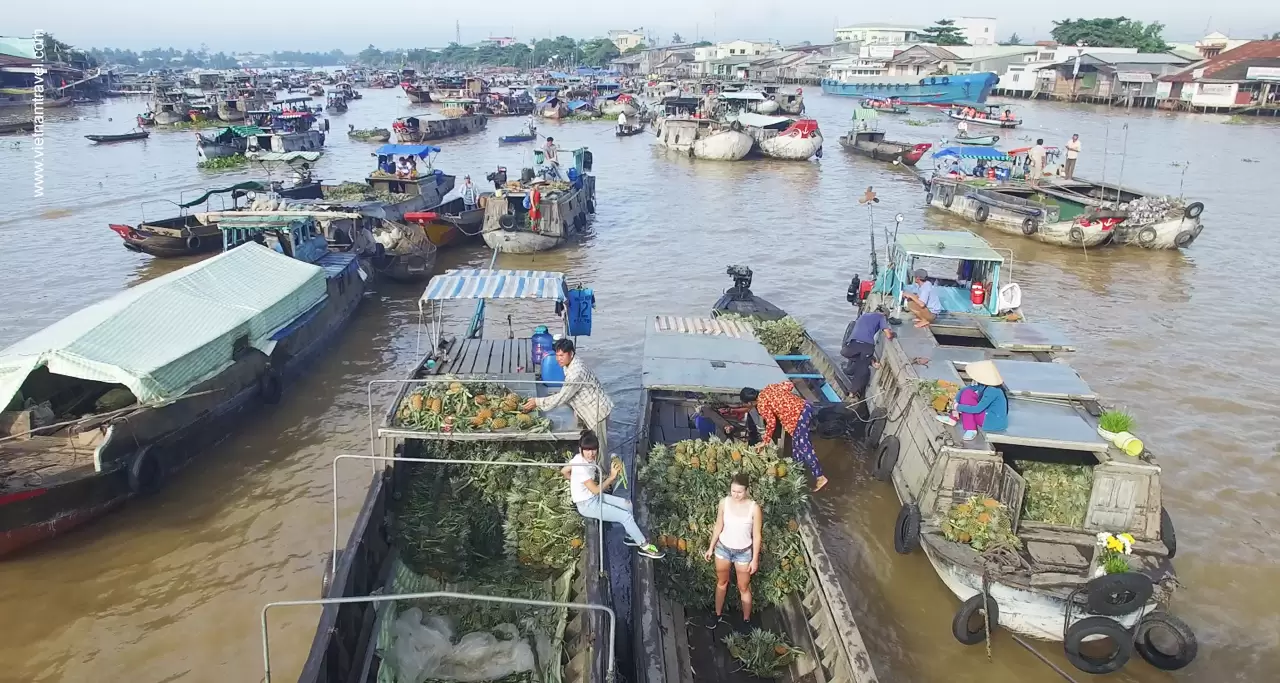
Overview of Cai Rang Floating Market.
Table of Contents
1. History of Cai Rang Floating Market
The market, which has thrived for over a century, has been a centre for commerce in Can Tho City and its neighbouring provinces, such as An Giang, Vinh Long, Dong Thap, Tra Vinh and Soc Trang. It was formed when road and transportation had not been developed yet.
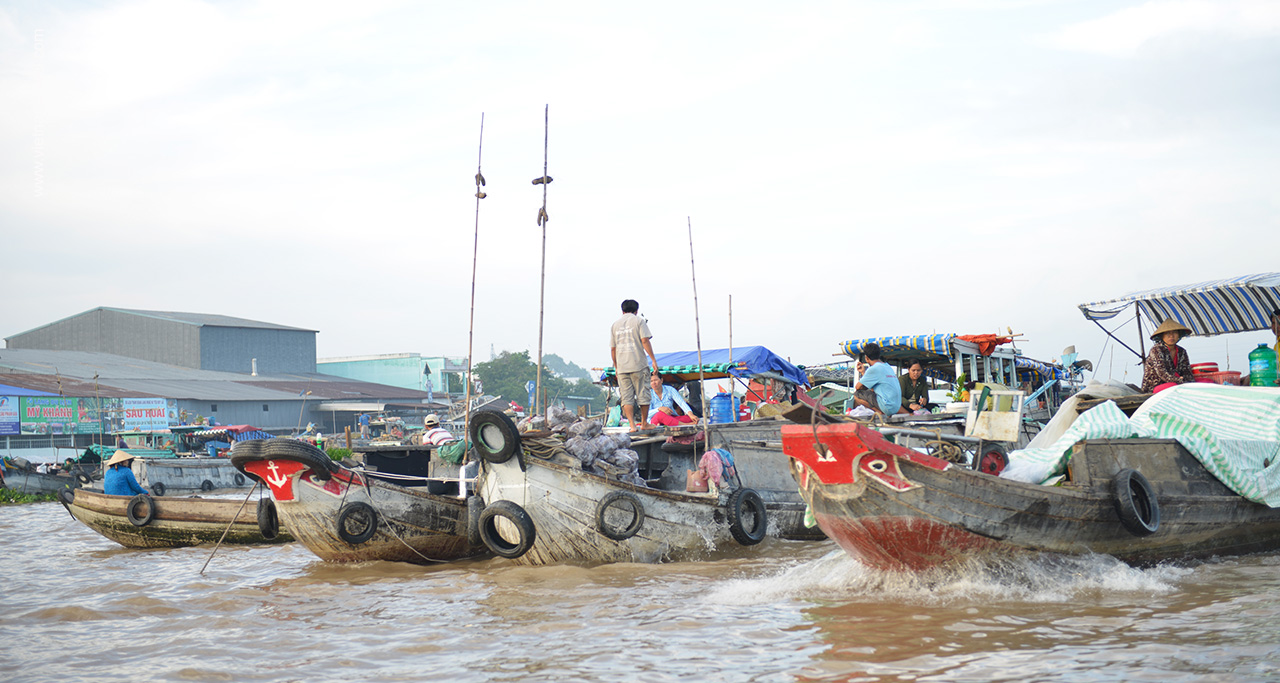
The name of this market has been existing for a long time, but its origin has not been clear. Legendarily, the name came from a big crocodile’s teeth which were plugged into the river’s bank. Thus, the land was called Cai Rang (means a tooth). Another theory mentioned in a book related to southern language, that Cai Rang has its origin from Khmer language – “karan” means a molded clay stove. Khmer people made a lot of “karan” and sold them everywhere in this land. Since then, local people pronounced “karan” into Cai Rang.
The need of exchanging agricultural products, and basic things connected local people by boats on rivers. Today, even though the road traffic network has developed significantly, Cai Rang Floating Market keeps growing and brings value to the locals of the country and area in terms of economy, culture, and tourism.
2. Weather in Can Tho
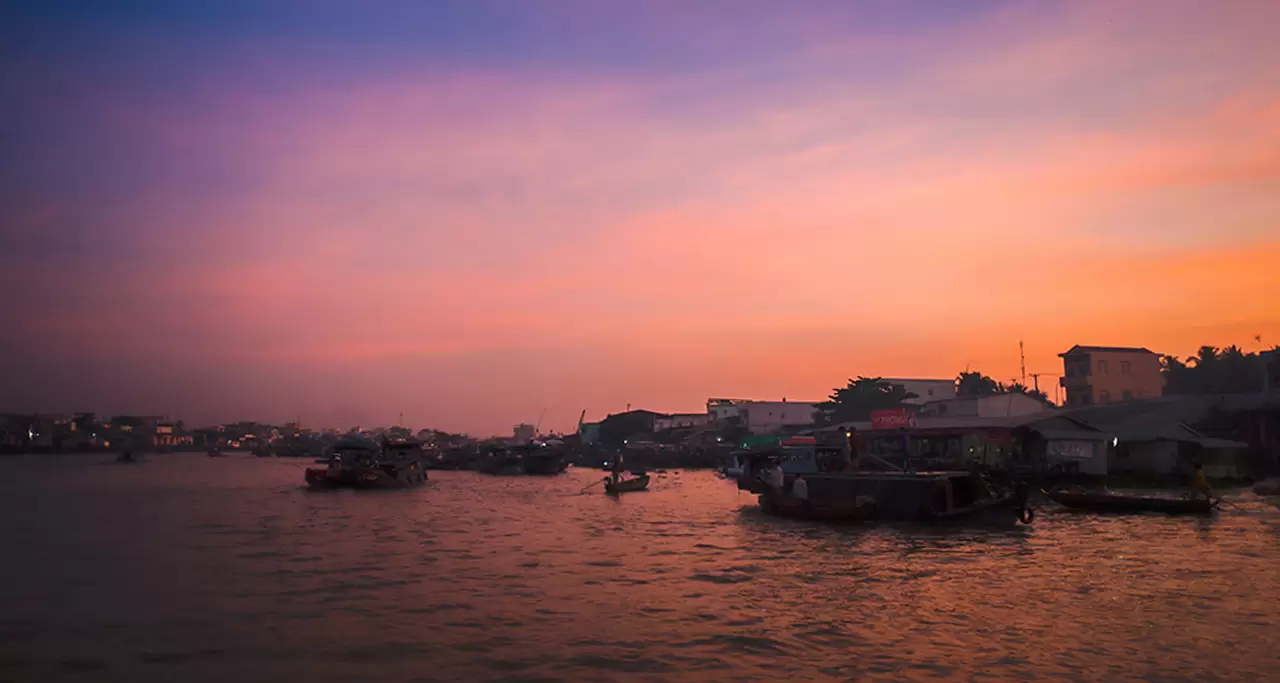
Cai Rang Floating Market at dawn.
Unlike the Northern part of Vietnam where there are 4 distinct seasons, the South has only 2 major seasons: the rainy season (from May to November) and the dry season (from December to April). The weather in Vietnam is quite mild, so you can visit Cai Rang at any time of the year. Each season, of course, makes for a different experience.
Trips during the rainy season will be much more relaxing due to the cooler atmosphere while the harvest season falls during the dry months, which means there will be more types of native fruits and agricultural products available.
3. Best time to visit
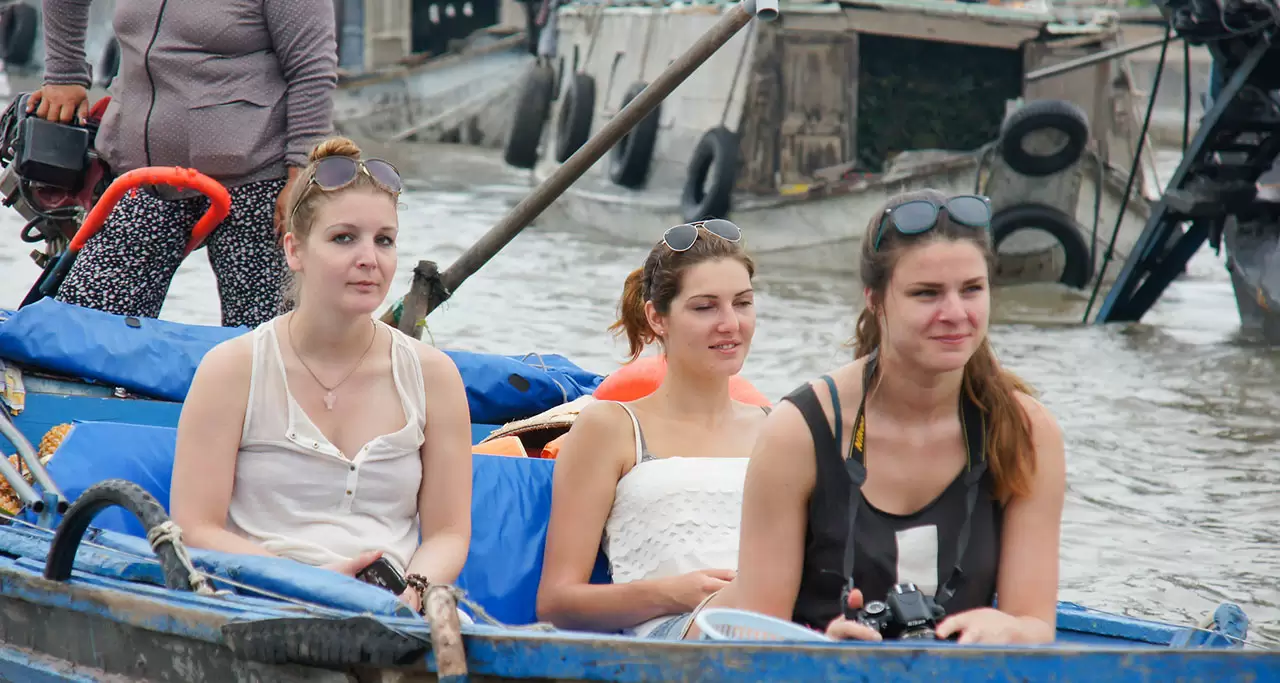
Tourists on a small boat from Ninh Kieu Wharf to Cai Rang.
When it is still dark, local merchants bring their farm products and things to market. The buyers also want to shop early when the weather is still cool then go home to start their normal day. That is why you should get up early for the most exciting moment of the market. The ideal time is from 5 A.M to 7 A.M when hundreds of boats gathers to buy and sell goods in crowds. The most distinctive feature of the floating market is probably the bamboo pole called “Cay Beo” with a length of 3m – 5m. This is a unique way to advertise when all kinds of goods that they sell are hang on the top so buyers could see from distance.
Cai Rang Floating Market does not open in lunar festive days, such as the first and second days of the first lunar month, Doan Ngo Festival (the fifth day of the fifth lunar month).
Read more: Top Floating Markets in Mekong Delta
4. What to see at Cai Rang Floating Market?
4.1. The Bustling Trading Scene
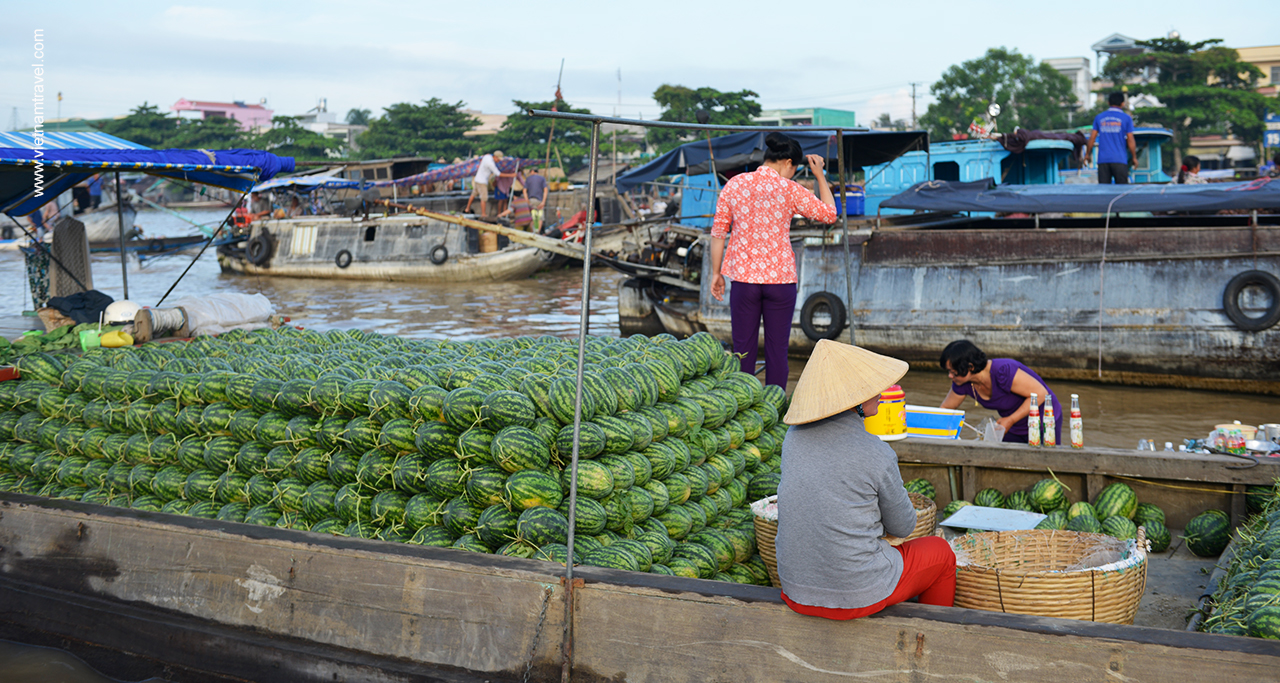
A motorboat with full of watermelons at Cai Rang Floating Market.
Cai Rang Floating Market is specialized as a wholesale market of fruits, agricultural products of the region. Goods here are concentrated in a large number. You can see the smooth performances of traders juggling fruit from boat to boat. Just look at what’s tied to the long pole above the boat to see what they’re selling. Local people and surrounding areas often use middle-size boats, canoes to carry agricultural products to consume here, while the big boats are owned by traders to deliver fruit to everywhere.
4.2. Daily life of the locals
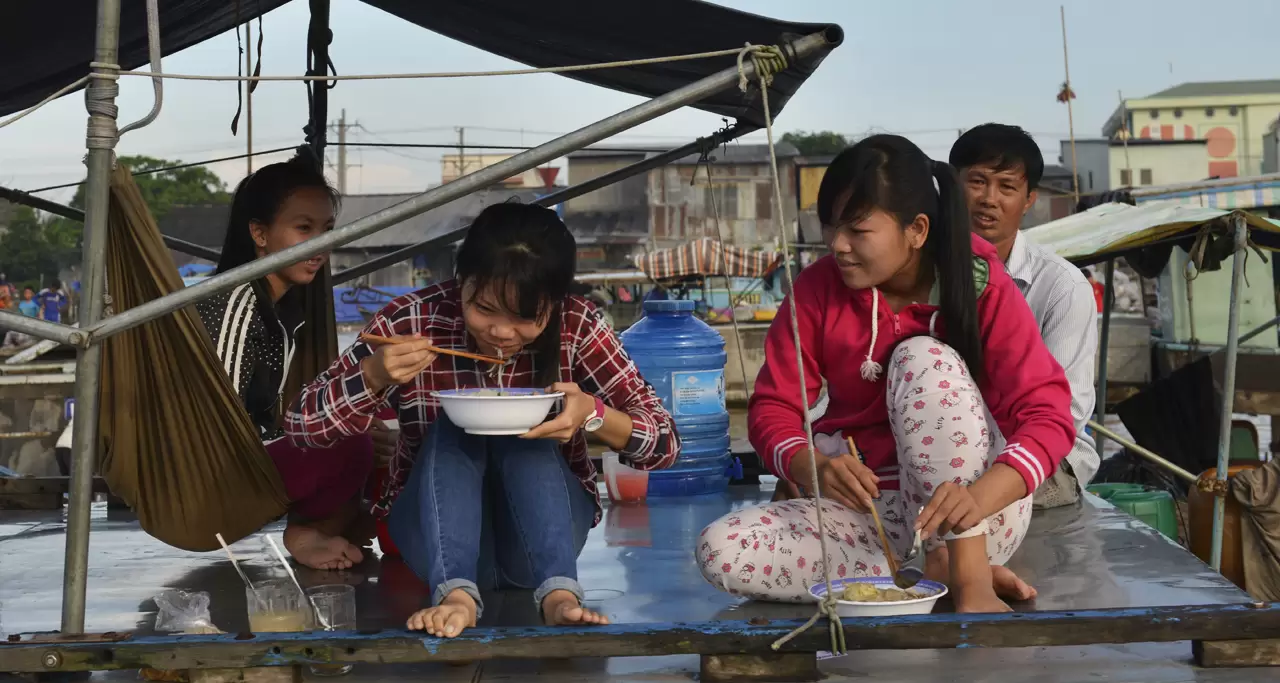
Local people enjoy breakfast on their “home” boats in Cai Rang.
Soaking up in the bustling atmosphere of the special market, you can observe and learn life of many families with several generations living together on boats. There are boats as “mobile apartment” on the river with flower pots, animals, and full interior such as TV, DVD, stereo… including motorcycle parked on the boat. Not only is the vehicle used to purchase and deliver, but it is also the residence of traders’ family. All daily activities take place on boats.
4.3. Local products
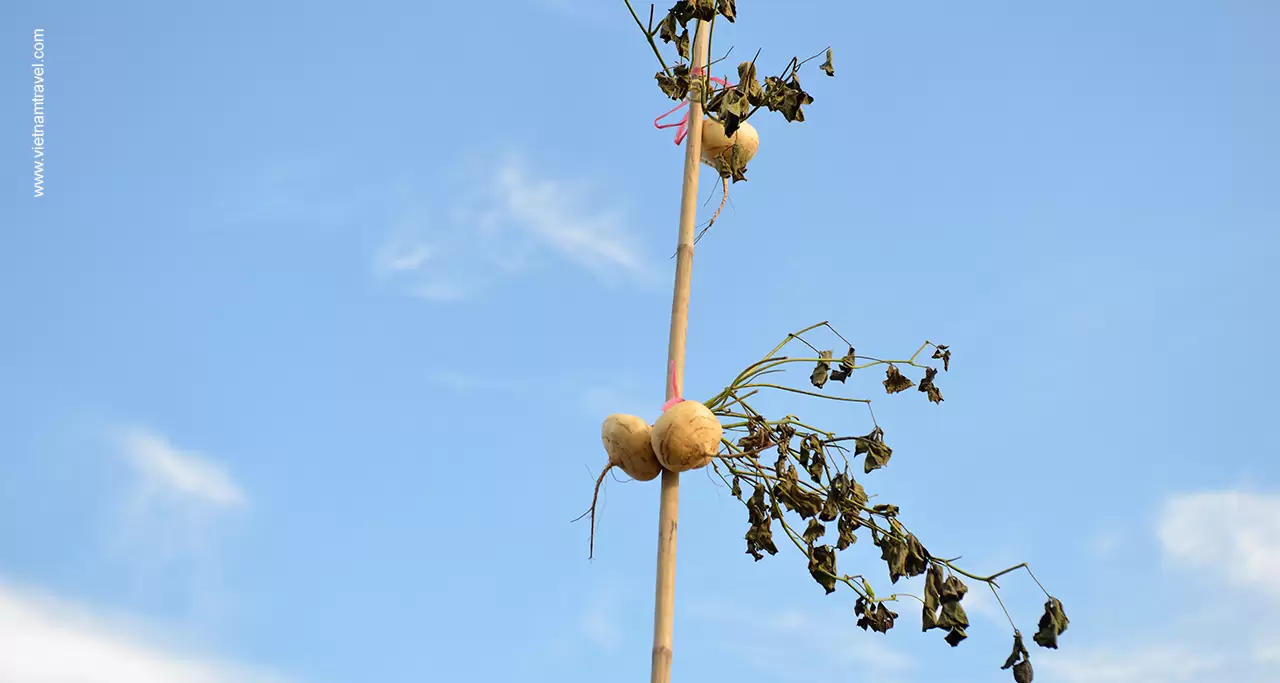
“Cay Beo” – a pole hanging kinds of fruits or goods that local people sell in Cai Rang Floating Market.
As one of the main trading centers of the Mekong Delta, Cai Rang is a place where the locals sell and buy a wide range of products catering to their daily lives. Besides staple commodities, this is a famous location to find local products priced quite reasonably. You can find the freshest fruits harvested from nearby farms: durian, milk fruit, rambutan, mangosteen, grapefruit, etc., or even other processed specialties, such as fish sauce, coconut candy, or dried fish. You can choose from a variety of fresh fruit for a picnic later in the day!
4.4. Foods & Drinks
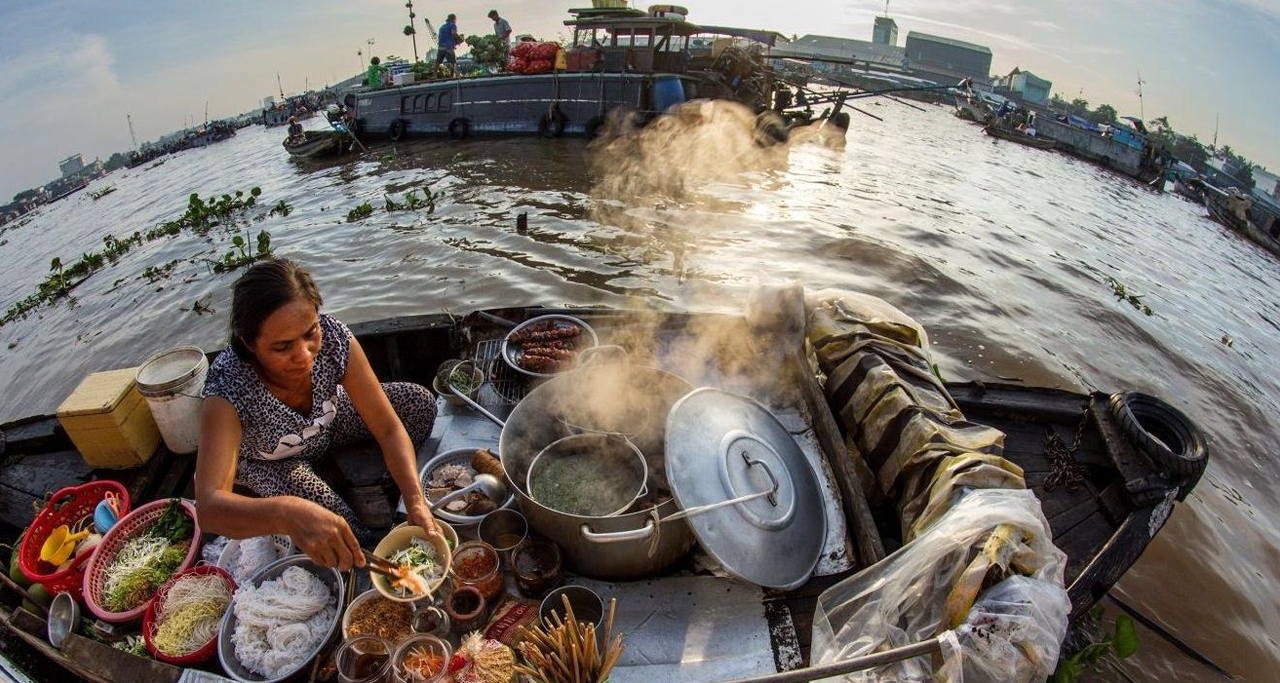
A local serves noodles as breakfast on boat in Cai Rang Floating Market.
You shouldn’t miss out on interesting eating experiences while visiting the floating market! Many floating restaurants open to serve breakfast for both sellers and shoppers. Here, you can find most local dishes, such as “com tam” (broken rice with grilled pork, egg), “pho”, “hu tieu”, “bun rieu” – some kinds of noodles that served with beef, pork and crab… With only 25,000 VND (around 1 USD), you can surely treat your hunger with quite a hearty meal.
Don’t forget that people here serve a different type of coffee that you may not see anywhere: Ca Phe Kho. People keep coffee in a clay cook with fire to make it hot and good smell. With one dollar, you can have coffee for two! But if you are not familiar with a bitter of coffee, coconut is a different choice and sold around.
5. How to get to Cai Rang Floating Market?
5.1. From Hanoi & Danang
A 2 hour & 10 minute flight from Hanoi (HAN) or a 1.30 hour flight from Danang (DAD) to Can Tho Airport (VCA) will bring you to Can Tho City where you need to stay one night and join the floating market in the next morning.
5.2 From Ho Chi Minh City (~ 170km)
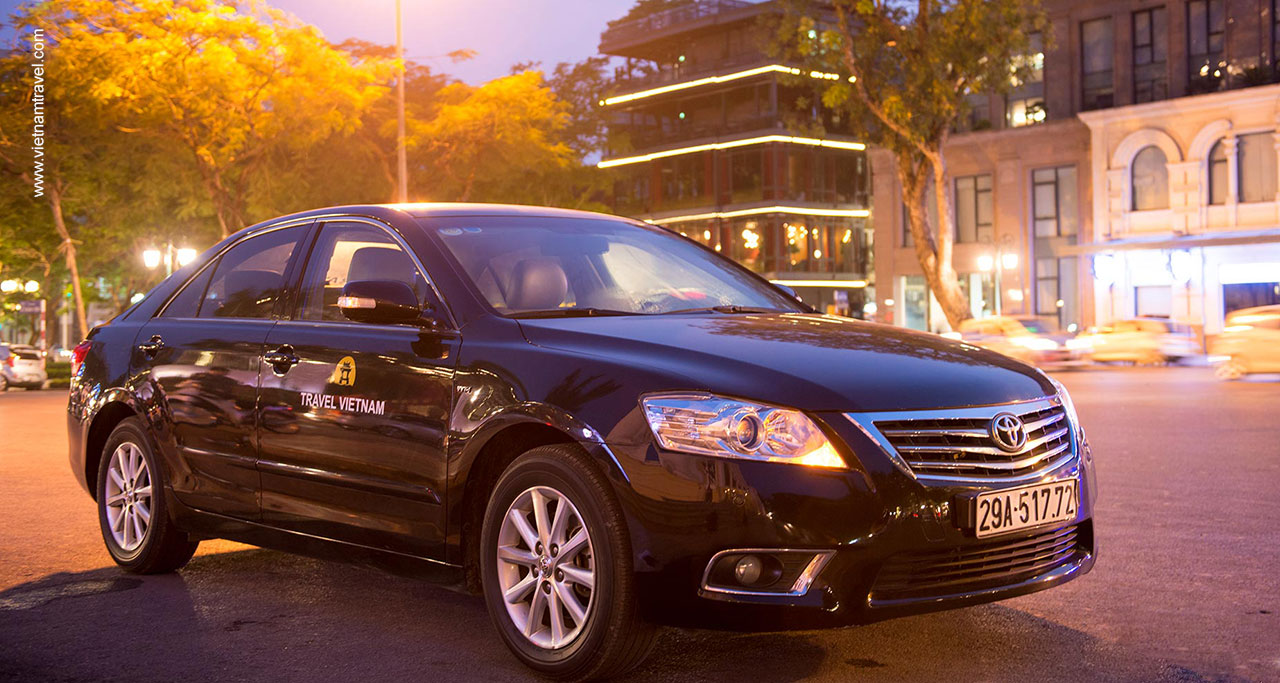
One of private cars that Vietnam Travel uses for tours and transfer service in Vietnam.
There is no train connection between Ho Chi Minh City and Can Tho. There is an international airport in Can Tho but no direct flight is operated between the two cities. So, you can travel by bus, taxi or private car/ van which takes around 4 hours.
The cheapest way is by bus with some certified tourist bus companies such as: Phuong Trang (Futabus), Vu Linh, Thanh Buoi… The price is around US$ 5-8/ticket. Buses stop at Can Tho Bus Station and you’ll need to take a taxi or a motorbike to the city centre. As you come to Can Tho quite late, you can join our carefully-designed Can Tho City Tour and stay in here one night before start your visit to Cai Rang on the next early morning.
If you are adventurous and like to drive yourselves, you can rent a motorbike in Ho Chi Minh City and make the journey via Mekong Delta provinces to Can Tho City. However, the roads are quite dangerous and we wouldn’t recommend it if you are first-time visitors.
A private car/ minivan will be, as always, definitely a great choice for every traveler to Mekong Delta’s largest city – Can Tho. It costs you more but provides you the most flexible itineraries, stops, photo opts… and you could reach to few other interesting places that you don’t on bus or taxi. Typical tours of Mekong Delta often include a visit to My Tho, Ben Tre or Cai Be along the way to Can Tho, it means you should book a trip that included services of a tour guide and a driver.
5.3 From Can Tho City
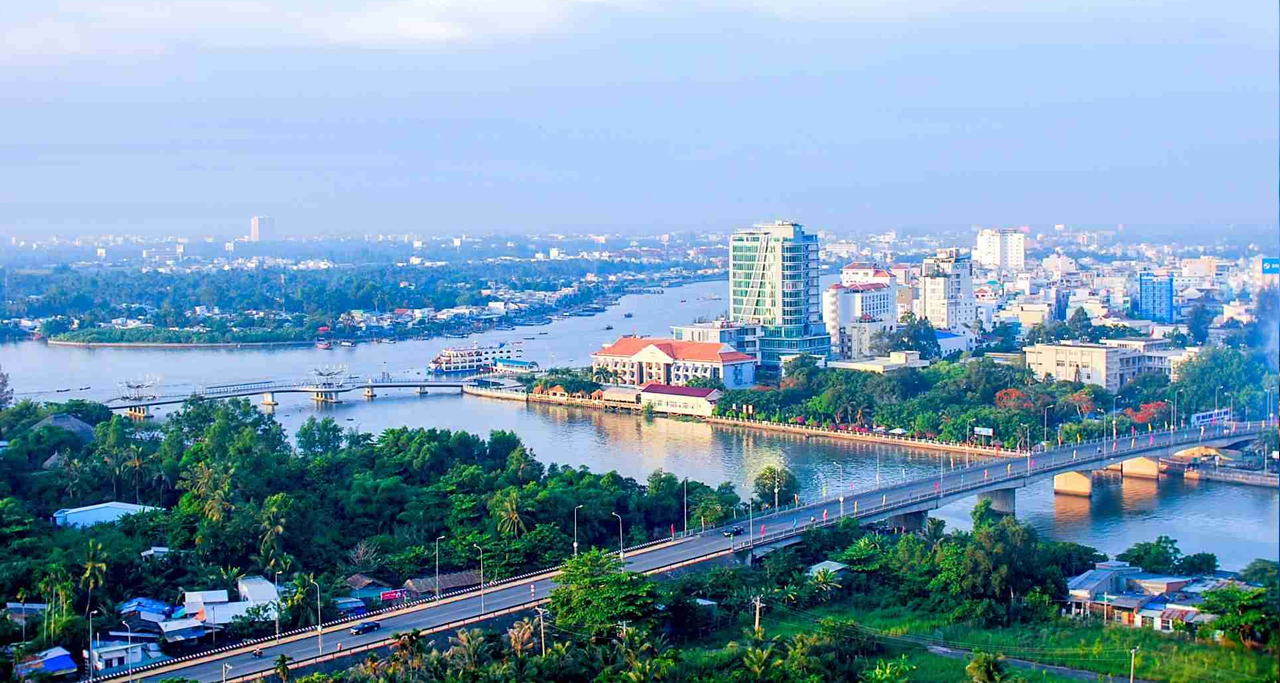
Can Tho City, lies by Hau River, a gate way to Cai Rang Floating Market.
It is about 6km away from the city centre to Ninh Kieu Wharf. You can easily take a taxi or motorbike to the quay then buy a boat ticket (~ US$ 18 per private boat or US$ 6 per person for a sharing boat) to explore the floating market. After touring the Cai Rang Floating Market, you can also take time to walk around villages along the river to visit rice paper factory or fruit gardens. It is interesting to enjoy the cultural life in the Mekong Delta.
6. Local tips
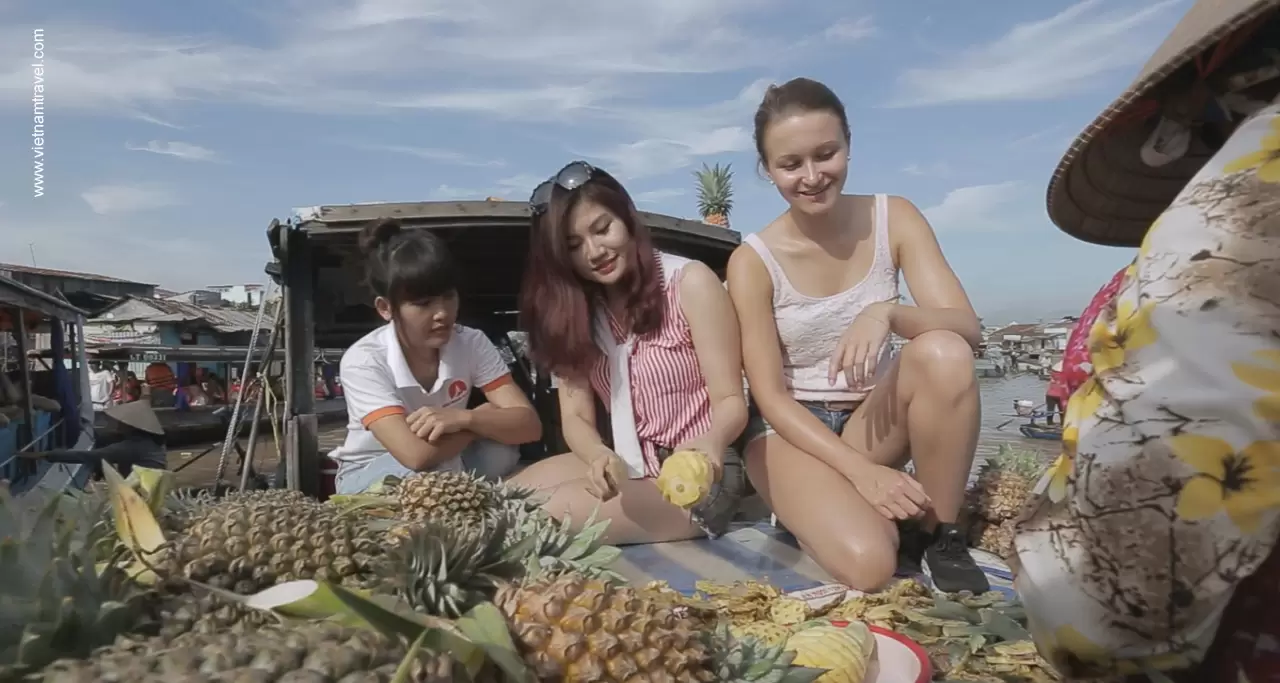
Vietnam Travel’s tour designers and travel consultants tasted local fresh fruits on boat in a visit to Cai Rang Floating Market.
• Make sure to get there early. The sunrise from the boat is fantastic and the food is at its freshest. You can see the market waking up from its slumber.
• Know what goods a boat sells, you just need to obverse the poles erected in front of the boat from a distance. On these poles, the sellers will hang a sample of the products they are selling.
• Remember to bring a hat and sunblock since the sun will become hot very quickly.
Cai Rang Floating Market is definitely a must-visit destination with eye opening activities to do but getting there and being able to immerse into an authentic floating market experience could be a real challenge for many foreign visitors. Vietnam Travel, with a branch office in Saigon, organized daily departure tours to Mekong Delta, including this Vietnam’s largest floating market. Contact our travel consultants to get best support for your Mekong River tours!



